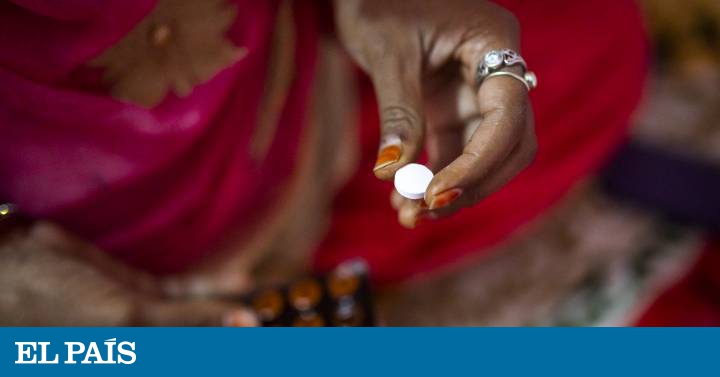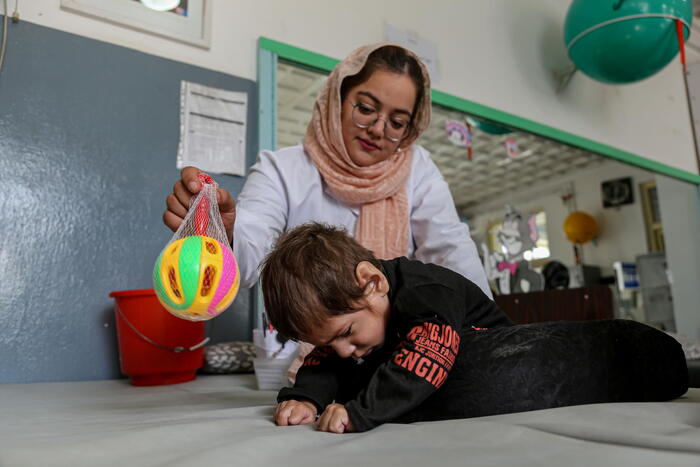Last month, Sheuly sped off to a hospital in Dhaka because she needed emergency treatment. The 25-year-old Bangladeshi woman had just given birth at home, thinking it was safer than doing it in a hospital during the pandemic. But when she began to suffer postpartum hemorrhage — one of the leading causes of maternal death — exposing herself to covid-19 became her least concern. The same thing happened to Majufa Akter, the midwife who acted quickly to save Sheuly's life, even though she had not yet received the proper personal protective equipment.
MORE INFORMATION
- The unwanted 'baby boom' caused by the pandemic
- Pandemics do know gender
- The gender perspective before the covid-19
Giving birth is an important moment in women's lives, regardless of the circumstances. Doing so during a pandemic adds a new form of stress to the experience. Mothers do not know whether to go to hospitals - where they fear exposure to the coronavirus, staff shortages or being separated from their partners - or to give birth at home, where the risk is often greatly increased in the event of complications. This is just one example of how the need to manage the covid-19 pandemic complicates the provision of essential health services and leaves women particularly vulnerable.
Around the world, when health systems are overloaded, services for women are often the first to feel it. This results in increased maternal and infant morbidity and mortality. To illustrate the risks, we have modeled the potential impact of the pandemic on three key sexual and reproductive health (SRH) services: births attended by experienced health professionals (including midwives); births in sanitary facilities; and access to contraceptive methods.
While lack of access to SRH services is a problem in many parts of the world, including developed countries like the United States, we focus our analysis on 14 countries in the Asia-Pacific region, which are especially vulnerable: Afghanistan, Bangladesh , Bhutan, Cambodia, India, Indonesia, Laos, Burma, Nepal, Pakistan, Papua New Guinea, the Philippines, Solomon Islands and Timor-Leste. All of them already have high maternal mortality rates: more than 100 deaths per 100,000 live births, which often reflect less use of health services, such as deliveries in medical facilities or with the help of trained assistants.
Reduced access to contraceptives and family planning services exacerbate risks for women
The optimistic scenario, according to our model, is a 20% reduction in the use of these three key services. That would lead to a 17% increase in the maternal mortality rate, equivalent to an additional 25,493 deaths this year alone. The pessimistic scenario — a 50% drop in the use of these services — would produce a 43% increase in maternal mortality, or an additional 68,422 deaths. Of these additional maternal deaths, a considerable proportion would be a consequence of increased fertility due to less access to contraceptive methods.
In fact, less access to contraceptives and family planning services exacerbate the risks. Border closings and other disruptions in supply chains could reduce the availability of contraceptives, which are often lacking even in normal times. Movement restrictions can prevent women from going to pharmacies or clinics, especially if family planning is not considered essential. And the fear of exposure to the coronavirus could make women with access to services not use them.
Together, these factors could lead to an unmet need for family planning services in 2020, up to 22% in our optimistic scenario or 26% in the pessimistic one, based on a baseline of 18.9% of women of reproductive age in 2019, when those who had access to modern contraceptive methods lose that fundamental service. This means that lack of family planning could increase up to 40% in 2020 alone. The result would be thousands of unintended pregnancies in each of those 14 countries and an increased risk of health problems for millions of women and their newborns. .
Anyway, these data are just the beginning: the covid-19 crisis will almost certainly continue beyond this year. The costs - for women's economies, health systems, and well-being - will continue to accumulate. Recent advances towards more effective and inclusive health systems and gender equality can be reversed.
We must act to avoid the consequences. At the 1994 International Conference on Population and Development (ICPD) in Cairo, the world's governments pledged to provide SRH services for all, a commitment they reiterated at the ICPD25 Nairobi Summit25 . When countries design economic and public health interventions, they must ensure that this commitment is met.
Lack of family planning could increase up to 40% in 2020. The result would be thousands of unintended pregnancies
For example, leaders must ensure that essential personnel, such as midwives, are not removed from their primary tasks of assisting mothers and newborns, and that everyone receives the personal protective equipment they need. Policy makers must also protect access to contraceptives. And, when possible, the use of telemedicine and other innovative approaches to health service provision should be considered. If this pandemic has taught us anything, it is the potential of technology and connectivity to save lives.
United Nations Secretary-General António Guterres correctly called the covid-19 crisis the "greatest test" the world has faced since World War II. To overcome it, leaders everywhere must recognize that while the pandemic affects us all, those who were already marginalized - including women, ethnic minorities and the poor - are likely to suffer the most. So no pandemic strategy is complete without a plan to ensure that access to essential sexual and reproductive health services is not disrupted for all.
Davide De Beni is a health economics advisor in the Asia-Pacific office of the United Nations Population Fund (UNFPA). Federica Maurizio is a sexual and reproductive health and rights analyst in the Asia-Pacific office of UNFPA. Spanish translation by www.Ant-Translation.com.
You can follow PLANET FUTURE on Twitter and Facebook and Instagram, and subscribe here to our newsletter.





/cloudfront-eu-central-1.images.arcpublishing.com/prisa/EMYXC3EVHNEG3OJHGIQCB2IVYA.jpg)



